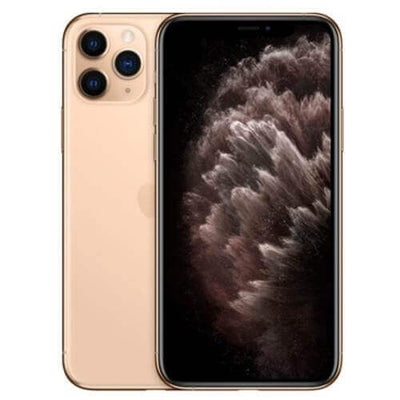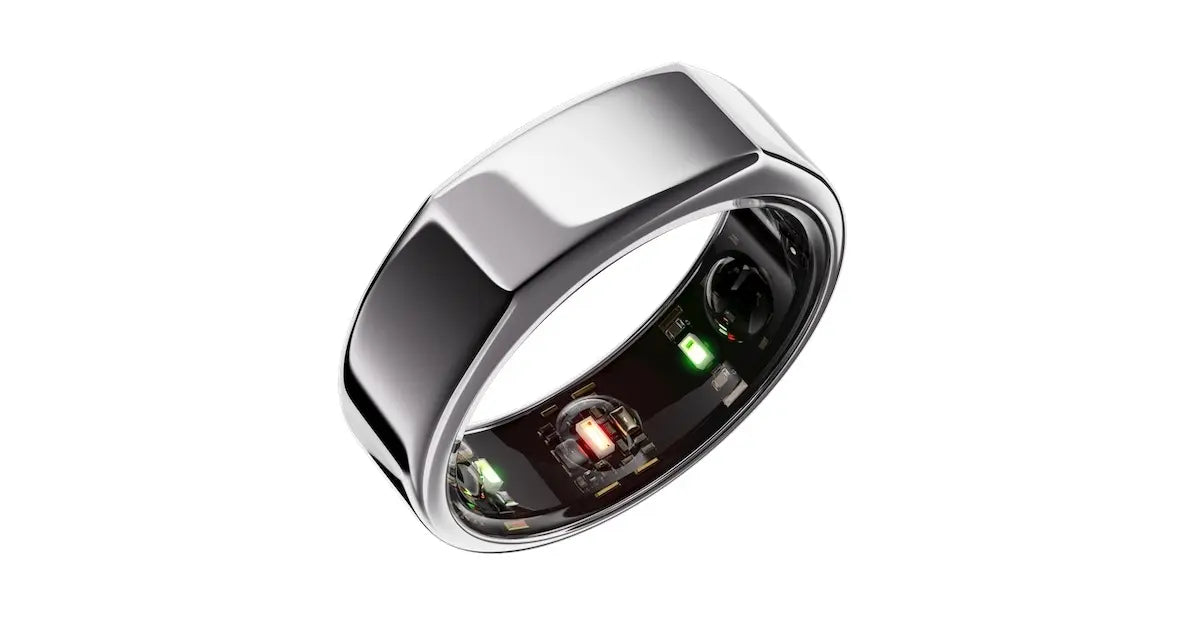INTRODUCTION
Sleep apnea is a condition affecting millions around the world, yet many go undetected due to their subtle symptoms. The Oura Ring is hands down one of those rare health-tracking devices in which users have found great instrumentalism for spotting potential signs of this serious sleep disorder.
Oura Ring can provide a number of important data related to sleep patterns that can indicate sleep apnea: tracking resonating health metrics such as heart rate variability, respiratory rate, and blood oxygen levels. This level of tracking is of the utmost importance because sleep apnea, if untreated, may have very grave results on one's health, including heart diseases, high blood pressure, diabetes, and even stroke.
One of the main reasons sleep apnea is often left undiagnosed is symptoms-including pauses in breathing, heavy snoring, and awakenings-occur predominantly during sleep. It is possible that the sufferer may remain totally unaware of how their breath repeatedly gets interrupted at night, leading to poor sleep quality and resulting fatigue during the day.
By continuously tracking during the night, analyzing breathing patterns, and then alerting on detected anomalies, the Oura Ring is an unusual solution-one that offers a great way to help identify potential sleep apnea. I have used the self-tracking device called the Oura Ring, which has recorded my own sleep-apnea experiences.
It has really helped to manage the condition through closely monitoring my sleep night after night, improving in quality and overall health. With this blog, I look at how the Oura Ring could be one perfect way of taking charge of peoples' health and well-being once provided with actionable data on sleep patterns; hence, it also helps to identify and manage sleep apnea.
DESIGN
The design of the Oura Ring is elegant, blending style with functionality to result in one of the most discreet and versatile health-tracking devices.
Not like the big and chunky wearables of yesteryear, the Oura Ring is sleek and light, designed to be worn day and night without being intrusive. Its minimalist design allows it to be worn on any finger, where it closely monitors the vital signs and offers users an amazing breadth of health insight. The ring is made from high-quality, durable materials like titanium to ensure that it can go through daily wear and tear-water, sweat, and even impact-without compromising on functionality. But the real magic lies below its pretty face.
The Oura Ring has advanced LED sensors that use red and infrared light to penetrate the skin and measure blood oxygen levels, heart rate variability, and body temperature. These measurements are crucial for the tracking of sleep quality and aspirations in detecting abnormalities such as sleep apnea.
It can thus track changes in blood oxygen saturation over the course of the night to identify potential events of interrupted breathing-a hallmark of sleep apnea. The accompanying Oura app provides a thorough analysis of data from the ring and offers users an intuitive, user-friendly interface to view their health trends.
It gives users a deeper understanding of nightly sleep with detailed graphs and charts, such as the breathing regularity graph.
The sleep score in the app, and readiness score give actionable feedback to the user, enabling them to make better decisions about life changes and health. By suppressing sophisticated design with advanced technology, the Oura Ring stands out as one of the best devices for tracking conditions such as sleep apnea.
FEATURES
The detection of sleep apnea with the Oura Ring changes the paradigm for sleep health monitoring. It can also help in identifying sleep disorders, such as sleep apnea, which on normal occasions would not be easily detectable without medical equipment, through the measurement of levels of SpO2 in the blood during nighttime. While the normal rate of blood oxygen ranges between 95-100%, if such levels drop, it may mean that the body is not getting enough oxygen during sleep, which is one of the symptoms characterizing sleep apnea.
The ring continuously monitors oxygen levels with the sensors of the Oura Ring and provides a graph of breathing regularity that reflects disturbances or irregularities occurring in the sleep breathing pattern. Full features like these allow users to keep tabs on their sleep quality and breathing efficiency over time through the app's trend section.
The app segments the data into periods of a day, week, or month, by which the user will more easily be able to pinpoint reoccurring sleep disturbances they may link to possible lifestyle or environmental changes that affect their rest. This big-picture view lets the user account for longer-term trends that might not be as visible if one looks on a more limited timescale and offers insight into overall health and quality of life. Although the Oura Ring does not officially offer any diagnosis of sleep apnea, it can give data that may prompt alarm bells for the condition.
Users can share this further with healthcare providers for their evaluation. If, through regular data, the Oura Ring is showing frequent drops in oxygen levels or irregular breathing patterns, that information could, in turn, generate discussions with medical professionals, which may indicate sleep studies or further testing to validate sleep apnea.
Hence, even though the ring does not replace professional diagnosis, it at least provides a proactive step in dealing with sleep disorders that can improve management of one's health in general.
CONCLUSION
The Oura Ring does indeed boast powerful specs in user sleep health monitoring and improvement; really, it is not to be used as a substitute for any medical diagnosis by a licensed professional. It allows deep insights into sleep disturbances, such as possibly picking up the early signs of sleep apnea.
Equipped with advanced sensors tracking a set of key metrics on the wearer's blood oxygen levels, heart rate variability, and breathing regularity, the Oura Ring will help in ascertaining the overall sleep trend for the user and whether there is some irregularity that would need intervention.
Though not a definitive diagnosis, the Oura Ring is more of an early warning system, signaling the user to possible health concerns. Sleep apnea is said to affect millions worldwide, with serious long-term health effects if left untreated.
The early detection, in this case, becomes cardinal, and Oura Ring gives users a sort of autonomy by providing real-time feedback related to healthy sleep. With this knowledge, users will be informed and better equipped to make personal decisions on lifestyle changes that will promote good sleep hygiene and know when professional medical consultations should be pursued. Potential sleep disturbances will have an easy time being identified in their early stages, so proactive measures could probably prevent further complications arising from those disturbances.
Although not a medical device per se, the capacity of the Oura Ring to track metrics related to sleep provides an amazingly valuable layer of insight. Empowering users with this knowledge and set of tools will enable them to take charge in making healthier choices that can help improve sleep quality and, by extension, overall well-being.
FAQs
1. Can the Oura Ring diagnose sleep apnea?
No, the Oura Ring cannot diagnose sleep apnea. Equipped with advanced sensors recording a host of physiological patterns, including blood oxygen levels and breathing irregularities, this is by no means the diagnosis from a certified medical device but could rather serve as an early warning with the tracking of various data points that may indicate changes in breathing patterns or oxygen saturation levels, possibly related to sleep apnea.
However, a diagnosis requires a formal professional sleep study with specialized equipment, including polysomnography. The Oura Ring is more of a wellness gadget and will offer insight for users concerning overall health with sleep rather than actual condition diagnosis. If the data shows abnormalities, consultation with a healthcare professional is extensive, covering an overall checkup and further confirmatory tests that may be needed to investigate sleep apnea or other sleep-related disorders.
2. How does the Oura Ring monitor the level of blood oxygen?
The Oura Ring does track blood oxygen levels based on technology called pulse oximetry.
It has inside LED sensors, providing both red and infrared light, reaching through the skin of your finger. As these light beams go through your blood vessels, a certain amount of the transmitted light is absorbed by both oxygenated and deoxygenated hemoglobin in the blood.
Then, the ring measures the amount of light reflected back to make an estimation of how much oxygen is in your blood, which is your SpO2 level. All this information gets recorded and analyzed for trends in the fluctuation of oxygen in the blood, largely intended to be used for sleep.
The Oura Ring uses this data as a basis to analyze breathing patterns or overall sleep quality. Although it can be very well worth it, depicting how well your body oxygenates while sleeping, this is for wellness only and not for diagnostic or treatment purposes.
3. What are the symptoms of sleep apnea?
Sleep apnea is a condition wherein one's breathing repeatedly stops and starts during sleep.
Common symptoms include loud snoring, gasping for air, and periods when breathing stops, as noticed by a bed partner. People with sleep apnea often wake up in the morning feeling tired, despite having slept through the night, and they may feel groggy and irritable during the day. Morning headaches, dry mouth, and problems paying attention may also occur.
Sleep apnea does not affect only sleep quality but it also could be hazardous for health if left unmanaged. It rises the risk of heart diseases, stroke, high blood pressure, and diabetes. Some people may even not notice these symptoms, so it is practically impossible to diagnose sleep apnea by oneself.
If some or all of the mentioned sings appear, one should immediately consult with a doctor or healthcare professional. Most of the time, proper diagnosis requires a sleep examination that can monitor breathing and oxygen levels during sleep to verify the presence of sleep apnea.
4. What to do in case my Oura Ring detects irregular breathing patterns?
When your Oura Ring picks up upon irregular breathing patterns while you're sleeping, for example, it's not something to be ignored. While the Oura Ring will never diagnose anything, frequent irregularities can suggest a possible medical condition, such as sleep apnea.
That is best done with a healthcare professional who can consider symptoms more seriously. A doctor may suggest undergoing a sleep study in which sophisticated equipment will monitor your breathing and oxygen levels, among other vital signs, overnight. This may help to confirm or rule out sleep apnea or other types of sleep disorders.
Clearly, early on, detection and diagnosis are critical, because untreated sleep apnea will lead to deeper serious health consequences including cardiovascular problems, high blood pressure, and even diabetes. Meanwhile, keep track of your symptoms, noting lifestyle factors that could be affecting your breathing during sleep, such as changes in diet, exercise, or stress.
5. Can Oura Ring improve my sleep quality?
The Oura Ring itself cannot directly improve your sleep quality but is rather a powerful tool in understanding and optimizing your sleep habits. Oura Ring will monitor essential metrics of sleep stages, heart rate, body temperature, and breathing patterns for valuable insights into how your body is resting each night.
Based on the data, the Oura app gives personalized recommendations to create better sleep routines. For example, it may suggest maintaining a consistent bedtime, reducing exposure to blue light from screens before bed, or creating a more relaxing sleep environment.
Besides that, the Oura Ring also monitors daily activity, once more acting to help you understand how exercise or other factors can affect how you sleep. With time, users can make any small adjustments per the feedback from Oura Ring toward even better sleep quality-feeling rested and rejuvenated for their daily lives.




















